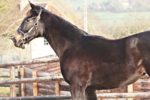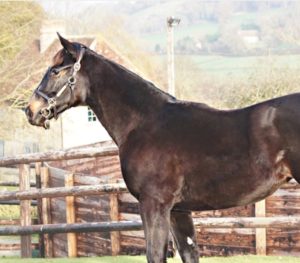Memories of days spent on horseback as a child burn with the same clarity as if they were yesterday for HRH Prince A A Faisal. It was there in Saudi Arabia that the young prince developed a strong affinity for the animal that would evolve into a strong passion for horseracing, and thankfully for us, in European horseracing.
British racing, in particular, has been all the richer for his interest. In an involvement that spans four decades, rarely has a season passed when the maroon and grey epaulettes have not been carried by some performer of note. To many, the 1990 Prix de Diane heroine Rafha ranks as the best, especially in light of her subsequent weighty influence on the Stud Book as the dam of leading sires Invincible Spirit and Kodiac. But there is also champion two-year-old Belardo to consider as well as the Prix Jean Prat winner Olden Times and Poule d’Essai des Poulains hero Make Believe.
In an illustration of the strength of the Prince’s small but select breeding programme, it is the blend of Make Believe and Rafha that sits behind his current homebred star, Mishriff. Bred by the Prince’s Nawara Stud Limited, this year’s Prix du Jockey Club winner has acted as a valuable tool in setting the stud career of his sire Make Believe in motion, and as a son of the Raven’s Pass mare Contradict, is also a great-grandson of Rafha.
Prince Faisal is swift to deflect his success to the assistance of Lady Luck. Yet many would agree that the idea of ‘making your own luck’ often holds true in this business, and that by building a good team of people while developing an innate knowledge of the families at hand, foundations are invariably laid for success. “You need luck in this game and I’m just very lucky,” says Prince Faisal, whose string are split between John Gosden, Andre Fabre, William Haggas and Roger Varian. “I use a lot of what I learnt in Arabia on conformation. I look at my mare and I look at the stallion, and use common sense – I try to combine both in a way that will complement them.
“The advantage of breeding also is that you get to know the families. You can have a filly that is working well at home and then doesn’t go on – you have that knowledge going forward as opposed to buying one at the sales. I know my families well.”
“I would ride whenever I could, every morning and every night in the desert”
Prince Faisal’s first winner arrived at Chester’s May meeting in 1980 when Kareem won for Peter Walwyn and by the end of that decade, the seed had been sown for a breeding operation via Bath winner Nawara.
“I enjoyed riding horses,” says Prince Faisal. “We had a big stable at home. I think that as a ten-year-old, I spent more time in the stables than in the house! I would ride whenever I could, every morning and every night in the desert.
“However, racing was always my love. I enjoyed visiting England but I don’t like travelling so I thought that if I had a stable there, it might encourage me to come over more and enjoy it.”
Nawara, by Welsh Pageant, came to be an important cog in the Prince’s fledgling breeding operation as the dam of Italian champion Alhijaz, who was trained by John Dunlop to win the 1992 Italian 2,000 Guineas. Appropriately, Alhijaz was among the best sired at stud by the owner’s Jersey Stakes winner Midyan.
Bought for $165,000 through the BBA as a yearling, Midyan came at a time of auction ring investment, a period that also yielded his 1986 Gran Criterium winner Sanam as well as Eljazzi, arguably the most important purchase of all.
Landmark purchase
Prince Faisal paid 92,000gns for Eljazzi at the 1982 Tattersalls Houghton Sale through long-term advisor Major Johnnie Lewis in a transaction that was reflective of a strong background associated with Captain Tim Rogers’ Airlie Stud.
She was a daughter of the Eclipse and Sussex Stakes winner Artaius, a Round Table horse who was one of an army of stallions Rogers stood at that time under his Airlie umbrella, and out of the 1968 Yorkshire Oaks runner-up Border Bounty. That made her a half-sister to the high- class miler Pitcairn, the British and Irish champion sire of 1980 in the year that his son Ela-Mana-Mou won the King George.
Prince Faisal says: “Nawara was the first horse that I bred and not long after, I bought Eljazzi as a yearling. I was at the sales looking at yearlings and I saw this nice filly. She was very strong, particularly behind the saddle, and correct. And I thought she had an interesting pedigree. She was a half-sister to Pitcairn, a very good miler, and I liked her sire line – I thought Artaius might make a good broodmare sire.”
Eljazzi showed some promise for Sir Henry Cecil, notably when winning a Leicester maiden by four lengths on debut in the autumn of 1983. However, she didn’t win again and as anticipated, it was at stud that she ultimately flourished, primarily as the dam of Rafha.
Rafha was the mare’s first foal and followed in later years by the Blandford Stakes winner Chiang Mai. Even without Rafha, Eljazzi’s current legacy would still be immense given it covers Group 1 winners such as Pinatubo, Pride Of Dubai and Chinese White.
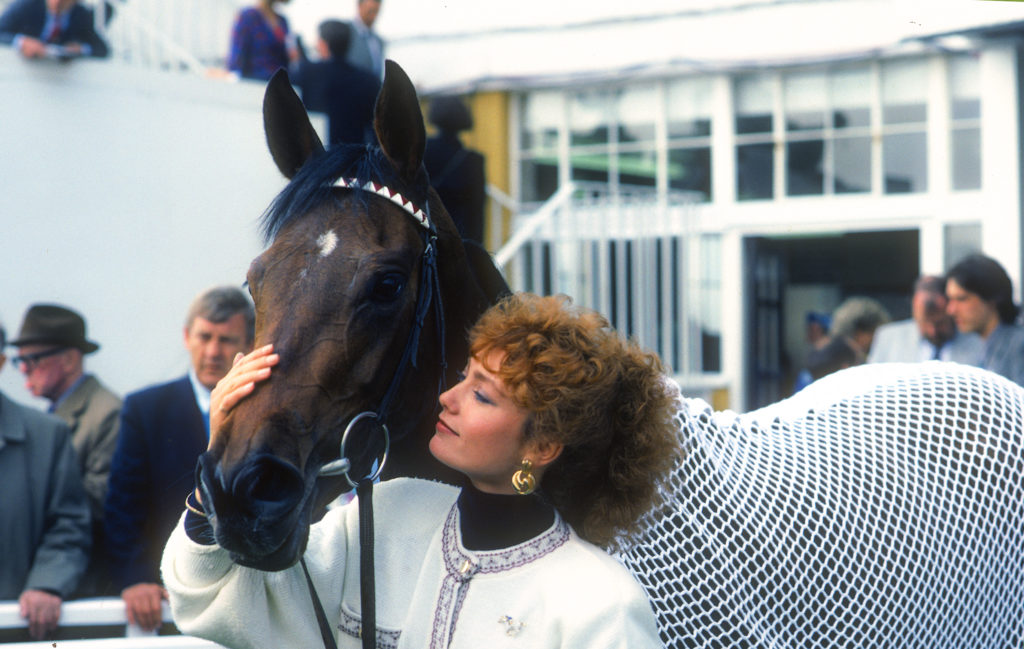
Rafha: the diminutive filly earned fame as the dam of Invincible Spirit and Kodiac – Photo: George Selwyn
However, it is through Rafha, by Kris, that Eljazzi holds the most influence.
“Eljazzi was very good behind the saddle, she had great strength,” says Prince Faisal. “Kris didn’t, even though he was lovely in front and a very good walker. Kris was also working well with mares with Djebel in their pedigrees, so I felt they could complement each other.
“At that time, Kris was doing extremely well at stud [as the British and Irish champion sire of 1985], especially as a sire of fillies, and I had this idea that he might become a good broodmare sire.
“But all Eljazzi had done was win a maiden and Kris stood for £90,000 – Lord Howard de Walden had just raised his fee. Everyone thought I was crazy.”
The resulting foal was a diminutive filly, in fact one so small that she was famously described by her trainer Sir Henry Cecil as being “knee high to a bumble bee”.
“I remember the first time that I saw Rafha, she was so small,” says Prince Faisal. “I said to Sir Henry, ‘I will be sending you a midget, so please no jokes’. And when she ran at Newmarket as a two- year-old, I remember another Newmarket trainer making a comment on her size – I responded that sometimes good things come in small packages!”
Rafha made four starts at two and progressed through each one to ultimately land the May Hill Stakes.
“Her first race was a two-runner maiden at Goodwood, which she won,” says Prince Faisal. “She ran again at Newmarket but got caught on the rail, and then went to Epsom, where she idled in front and was beaten by Ruby Tiger [a subsequent multiple Group 2 winner], giving her weight.
“So then we decided to try her in the May Hill with the instruction to Steve Cauthen to hold on to her. I was watching in the stands next to Prince Fahd Salman, who had Knight’s Baroness in the race, and as they came into the straight, to my horror the bit went through her mouth. She came up the straight with the rein in her mouth but still beat Prince Fahd Salman’s filly.”
He adds: “Henry suggested after her two-year-old season that she was so small that I should retire her. ‘She’s won her black-type,’ he said, ‘now is the time to send her to stud’. But I was keen to keep her for a three-year-old campaign and said to him that if he didn’t train her, I was sure that someone else would like to. So we decided that we would look at her again in the spring and see how she was training.
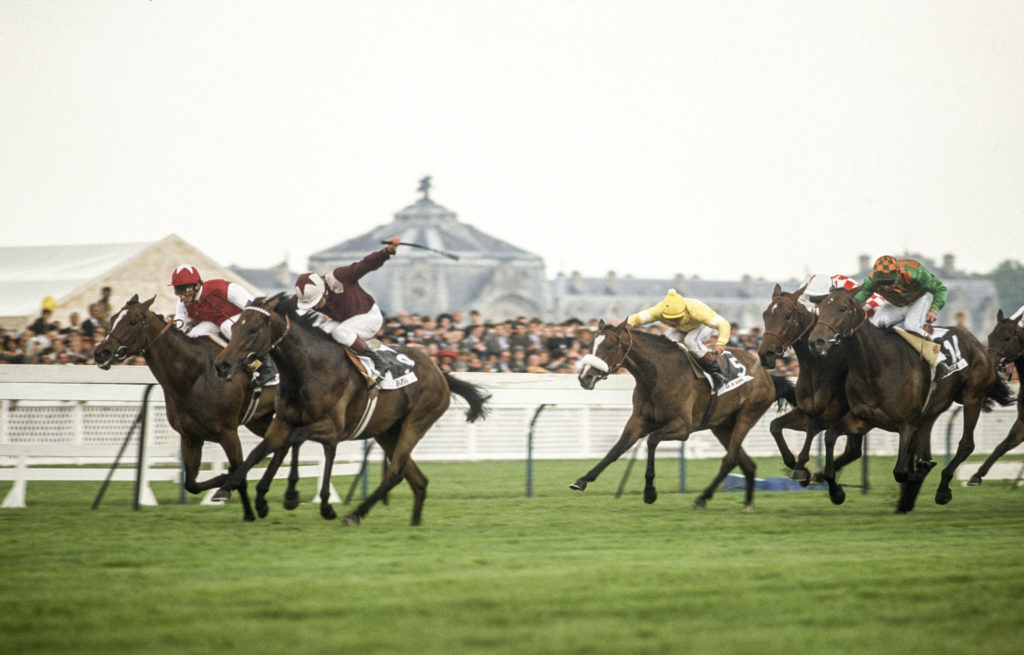
Rafha wins the 1990 running of the Prix de Diane – Photo: George Selwyn
“We worked out early on that she would not go for the Guineas, where she would clash with Sheikh Hamdan’s very good filly Salsabil. Then as she wasn’t working that well, we ran her in the Princess Elizabeth Stakes at Epsom to see where we stood, and she won by ten lengths. By that stage, it was too close for the Guineas so we decided that she would be trained with the Oaks in mind.”
Rafha consolidated her Classic claims by winning the Lingfield Oaks Trial and with Cecil’s Lupe Stakes winner Moon Cactus pencilled in for Epsom, was diverted to the Prix de Diane, only for her stablemate to make a late switch as well.
“Cauthen switched to Moon Cactus and we managed to get Willie Carson,” says the Prince. “Willie lost his iron coming out of the stalls but recovered and to my surprise she sprinted through the field and won, with Moon Cactus in third [she was later promoted to second].”
Niggles prevented Rafha from running again and she was retired to stud. ‘Knee high to a bumble bee’ she might have been but Rafha went on to become an outstanding producer as the dam of 11 winners to a wide range of stallions. Of those 11, four were stakes winners, namely Invincible Spirit (by Green Desert), winner of the Haydock Sprint Cup, Sadian (by Shirley Heights), winner of the John Porter Stakes, Acts Of Grace (by Bahri), winner of the Princess Royal Stakes, and Listed scorer Massarra (by Danehill). There was also the Group 3-placed Kodiac (by Danehill), who has followed Invincible Spirit’s example by becoming a major sire.
“At that stage, I wasn’t really breeding horses – I was buying them at the sales,” says Prince Faisal. “I had sold Eljazzi and a sister to Rafha. But when Rafha won the Prix de Diane, I thought I should keep her.
“The one thing I did with Rafha was use three different stallions in her first three seasons just to see what was dealt and what might work. And she kept breeding good horses for me.”
Most of the family, including Invincible Spirit and Kodiac, were trained by John Dunlop, with whom the Prince enjoyed a long association. Described as a “wonderful man”, Dunlop’s roll of honour for the owner included the aforementioned Alhijaz and Olden Times in addition to the Group 2 winners Azzilfi and Dandoun. Another talented horse, Group 3 winner Khamaseen, had the distinction of being Lester Piggott’s final Derby mount in 1994.
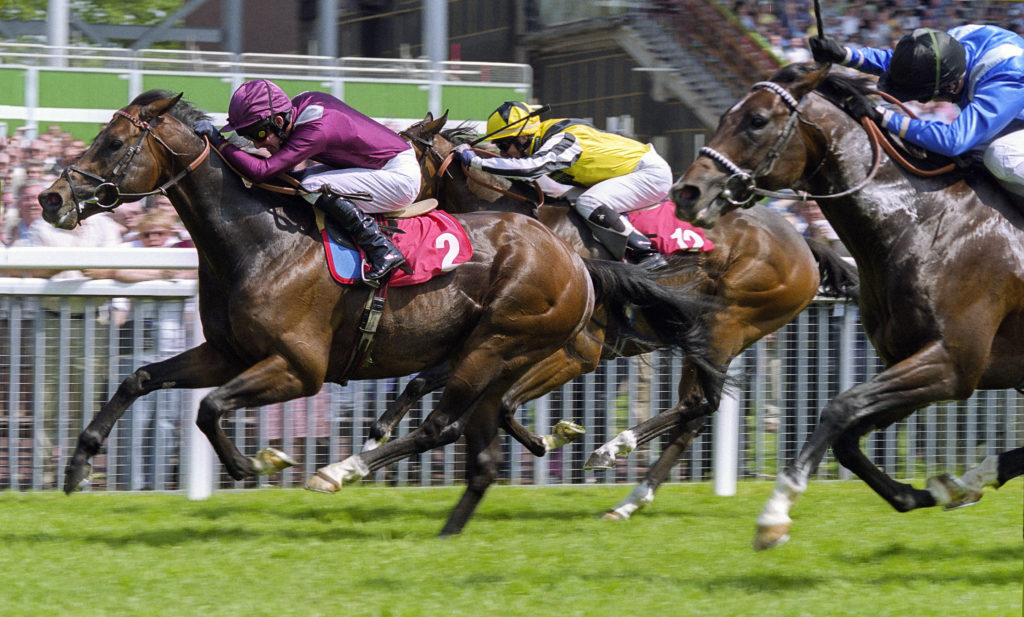
Invincible Spirit – Photo: George Selwyn
Rafha’s legacy
Both Invincible Spirit and Kodiac raced into their five-year-old seasons and made their names at stud from relatively humble beginnings; Invincible Spirit retired to the Irish National Stud at a fee of €10,000 in 2003 and at his peak commanded €120,000, while Kodiac retired to Tally- Ho Stud as a €5,000 stallion and today stands for €65,000. Between them, they are responsible for close to 100 Group or Graded stakes winners.
“I didn’t have many mares so I sold Invincible Spirit and Kodiac,” says Prince Faisal. “Both of them injured their pelvises in training and both came back from that. There’s a toughness to them that I think comes from Rafha. Mentally they’re very sound – the Kodiacs in particular seem to run every week.”
He adds: “I actually thought that Kodiac was the better horse. He was very unlucky as when he came back from his pelvis injury, he never got his ground. He didn’t like soft ground and every time he was down to run, the rain came.”
As for Massarra, she was bought by Coolmore in 2009, for whom she has bred stakes winners Gustav Klimt, Wonderfully, Bliss and Cuff to Galileo.
“Other people have done well with the family and I’m pleased for them,” he says. “It helps me but they also deserve the credit.”
Massarra’s Group 1-winning daughter Nayarra remains within the Nawara fold, although is catalogued to the Tattersalls December Mares Sale in foal to Churchill. The Prince continues to retain ownership of her fillies Magical Rhythms, by Pioneerof The Nile, and Sooda, by Street Cry.
Latest jewel
The jewel of the family, however, is Contradict, a Raven’s Pass daughter of Acts Of Grace. A non-winner herself, each of her first three foals are stakes performers led by Mishriff. He is the third foal out of the mare after Listed winner Orbaan, a son of Invincible Spirit and the first stakes winner inbred to Rafha, and last year’s Craven Stakes runner-up Momkin. Unfortunately, she has been barren for the past few seasons but is now in foal to Frankel.
Assisted by Ted Voute, Prince Faisal maintains a select broodmare band that also includes Canadian champion Spring In The Air, dam of promising two-year- old Third Kingdom, and Group 3 winner Tamniah.
Interests are also maintained in various flagbearers now at stud; in addition to the bigger names such as Make Believe, they include Olden Times, a virtually private stallion, still going strong at the age of 22.
“He’s a Darshaan so I kept him as I would like some fillies by him to breed from,” says the Prince of the horse, whose fast dam Garah was bred from the sole crop of Ajdal. “Darshaan is such a wonderful broodmare influence and I would like to have some access to the line in my broodmare band. It’s not so easy to find nowadays – it’s almost an outcross considering how much Sadler’s Wells and Danehill blood there is around.”
Covid restrictions prevented Prince Faisal from travelling to watch his horses run in person this autumn. But that hasn’t diluted the passion for a sport that promises him much for 2021, notably through Mishriff and the year-younger Third Kingdom. Progeny of Frankel, Kodiac and Decorated Knight are also waiting in the pipeline.
“I’m very lucky to work with some fabulous people,” says Prince Faisal. “But the point is I’m just a lucky person.
“It’s an exciting sport. I go numb when they win until maybe midnight after the race. Then I don’t sleep and go downstairs and watch it all over again. It’s exciting just to have raised a horse, and then to watch it win a race, well that’s incredible.”
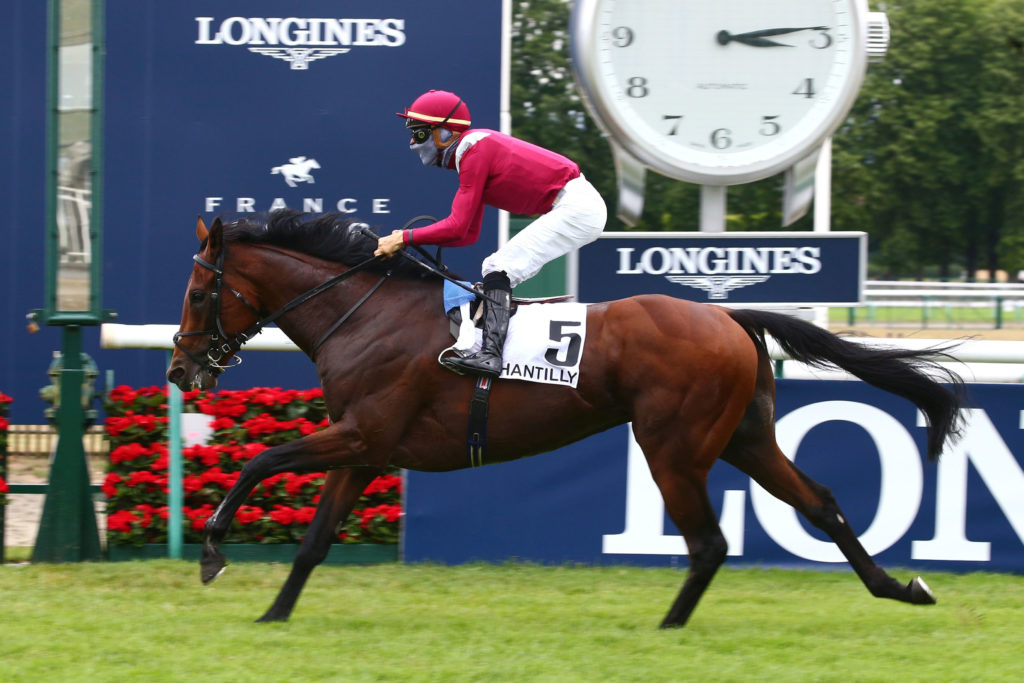
Mishriff took the spoils in this year’s Prix du Jockey Club
BELIEF IN YOUNG SIRE REAPING REWARDS
For the past few years, much of the focus within HRH Prince A A Faisal’s breeding operation has been on providing support for his Classic winner Make Believe, a move which has gone on to reap outstanding rewards through homebred Mishriff.
Mishriff was a leading light of the three-year-old division for John Gosden, winning the Prix du Jockey Club before following up in the Prix Guillaume d’Ornano. He also ran a fine second on dirt in the Saudi Derby back in March.
Mishriff failed to fire on his final start in the QIPCO Champion Stakes at Ascot but remains in training for 2021.
The fact that he is from the first crop of Make Believe, who carried the Prince’s colours to victory in the Poule d’Essai des Poulains and Prix de la Foret, is a source of great satisfaction. The son of Makfi stands at Ballylinch Stud in Ireland and in addition to Mishriff, has supplied Prince Faisal with homebred Listed winner Tammani.
“I went to the Tattersalls Foal Sale and had asked Ted [Voute] to find me a foal,” says Prince Faisal. “Make Believe was by a new stallion, we really liked him and bought him for 180,000gns. Everyone thought I was crazy!
“I did think though that he was my best yearling that year, and sent him to Andre Fabre accordingly. And Andre liked him from very early on.”
He adds: “John Gosden is a wonderful trainer, his attention to detail is second to none and he thinks very highly of Mishriff. With it being the first year of the Saudi Festival, I felt we had to support it and so we sent Mishriff to the Derby – John thought he would be fine on dirt. He was a bit unlucky as he missed the break and made up a lot of ground to run second.
“Then he surprised me with how easily he won the Newmarket Stakes. I said to John then that a placing in a Classic would really help Make Believe. That’s when we decided on the French Derby.”
Mishriff was spoken of as an Arc contender in some quarters following his wide-margin victory over The Summit in the Prix du Jockey Club. However, that option was never seriously considered, says the owner, with it instead being a potential avenue for a four-year-old campaign.
“John told me that he didn’t want to run him over a mile and a half this year,” he says. “He’s still growing and he wanted to give him as much time as possible. We look forward to next year.”


